This post may contain affiliate links. Please read our disclosure policy.
My Easy Baked Salmon recipe is our family’s go-to recipe! Topped with a simple honey garlic butter and lemon, this easy salmon recipe is sure to become your new go-to as well!
This best Baked Salmon recipe is on our menu almost weekly, and my kids absolutely love it. They love Grilled Salmon Kabobs and Salmon Patties too, but this garlic butter salmon is their favorite preparation. Your family will love it too, because I’m going to show you how to bake salmon perfectly every time!
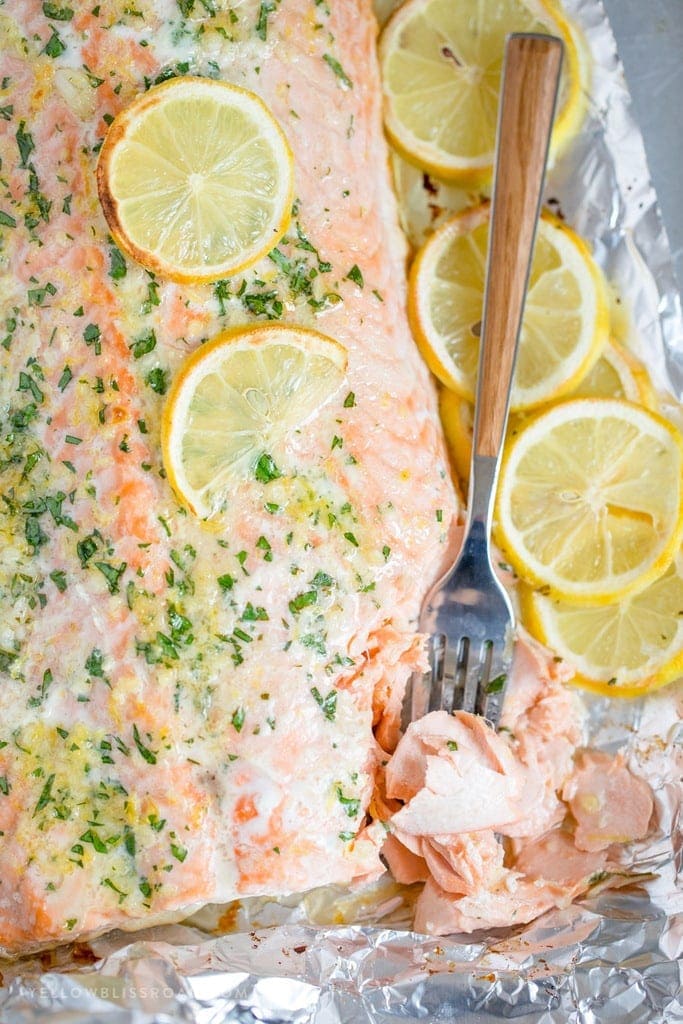
Why I Love Oven Baked Salmon
Salmon is an easy fish to cook. It’s delicate, but also holds up well to different cooking methods, from baking, to broiling, to frying to grilling. For this easy salmon recipe we are making baked salmon – it’s the most preferred in our household, and coincidentally, the easiest!
You do have to be careful not to overcook the salmon. Overcooking results in a dry and stringy flesh that’s just not as pleasant to eat. I bake salmon at 400 degrees for 15 minutes. There seem to be varying schools of thought on cooking salmon, utilizing various cooking temperatures and times, but this method has always yielded a moist and tender salmon for me, that’s light pink in color and never overcooked.
Eating salmon is healthy and delicious, full of protein and omega-3s. While this flavor combo happens to be one of my favorites, you can use other simple options such as fresh lemon with parsley or dill or just salt and pepper.
How to Make Oven Baked Salmon
- Prep the fish. Start by laying out a salmon fillet on a foil covered baking sheet. Season with salt if desired – not too much as it can quickly overpower the fish. You can also add more after cooking if needed.
- Make the honey garlic butter. Mix up the honey garlic butter by combining softened butter, minced garlic, minced parsley, honey and lemon zest. Slather that all up and down the fish and top with lemon slices.
- Make a “boat” with the foil. Bring up the sides of the foil to form a sort of “pan” that will keep the yummy butter and juices right in there with the fish. You can spoon the melted butter over the fish once it’s cooked if you like or serve it on the side for dipping.
- Bake salmon at 400℉. It doesn’t take too long to bake salmon – just about 15 minutes at 400 degrees, depending on the size and thickness. If you have a meat thermometer, it will come in handy here. I prefer to take it out of the oven at about 130-135℉. It will continue to rise in temperature during a 5 minute rest.
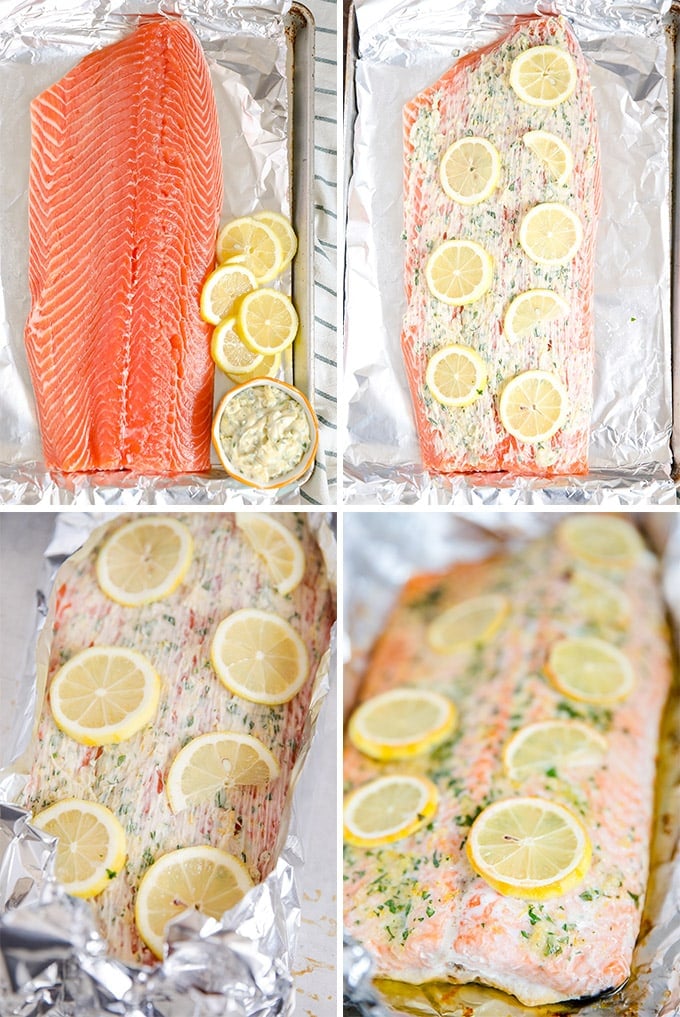
FAQs
The best temperature for baking salmon is 400℉. The flesh cooks quickly so the higher temperature helps to retain the moisture inside to keep the salmon tender and juicy.
The ideal internal temperature for salmon to be about 135-145℉. Some people prefer their fish more medium rare (125-130℉) or medium (130-135℉), and some prefer their salmon to be well done (145-150℉). The USDA recommends to cook salmon and other types of fish to 145℉. It will be light pink in color and fork tender. Use a meat thermometer if you have one, stuck into the thickest part of the salmon.
It’s really a matter of personal preference. I don’t like the texture of salmon skin, but my husband loves it. So I usually cook it with the skin on because it’s super easy to remove once baked. Plus the skin has a ton of nutrients, it’s just the texture that can be somewhat off-putting.
How To Choose the Best Kind of Salmon
There are generally two types of salmon available in my grocery store (and likely in yours, too) Wild Caught and Farm Raised. But what’s the difference?
Farm Raised Salmon:
- Raised in aquatic farming types of operations, rather than in the wild.
- Higher in fat, which gives it a milder flavor and makes it a little more forgiving if you overcook it a little.
- Pale pink/orange in color.
- Typically cheaper than other varieties of salmon.
- Usually Atlantic Salmon.
Wild-Caught Salmon:
- Like the name says, this type of salmon is caught fisherman style out in the big ol’ ocean.
- Has a deeper, more red/orange color and is leaner, as more fat is used in the wild to help regulate body temperature. This also results in a richer, more fishier flavor.
- Because it’s usually provided by small business fisherman operations, the price tends to be higher.
- Five types of wild salmon: King salmon, Sockeye, Coho, Pink, and Chum.
We prefer the milder, farm raised salmon, but both are delicious and will taste great when you’re baking salmon.
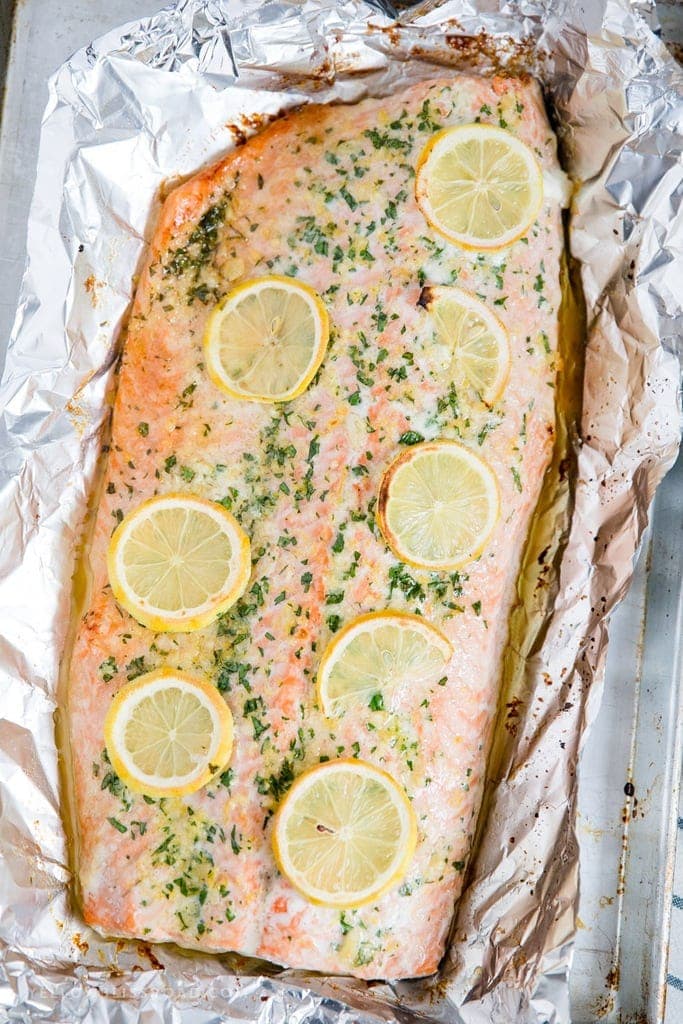
Serving Suggestions
Salmon has a mild flavor and pairs well with rice as a side dish. We love it with Coconut Rice, Seasoned Rice, or just a scoop of steamed white or brown rice. It’s great with Roasted Purple Potatoes or Buttered Noodles, too.
For veggies, anything green is a good choice, like green beans or broccoli.
Don’t forget the garnishes – Sprinkle on some fresh parsley or squeeze from fresh lemon juice.
Variations
I like to serve salmon with fresh lemon wedges on the side. A squeeze of lemon juice adds a burst of freshness.
Salmon can be prepared in a variety of ways, but we especially love it with this lemon garlic butter. If you’re looking for some different flavor options, these are a few of our favorites:
- Lemon and Herbs – Sprinkle with salt, fresh herbs like dill, parsley, and thyme, and lemon slices.
- Salmon with Dill Sauce – Simply seasoned salmon served with a creamy dill sauce on the side.
- Honey Mustard Salmon – Instead of butter, this salmon is topped with a blend of dijon and whole grain mustard for a unique, slightly sweet flavor.
- Teriyaki Salmon – Salmon topped with a sweet and savory teriyaki sauce. We love this in a lettuce wrap.
- Olive Oil instead of Butter – You can replace the butter with EVOO and mix the garlic and herbs with that. Brush it on lightly. It will work nicely.
How to Store and Reheat Leftovers
Storage: Place leftovers in an airtight container within 2 hours of cooking. It will keep for 2-3 days.
Reheating: Place salmon in a microwave safe dish and heat for 30 second intervals until fully heated through.
Freezing: Fresh (uncooked – never frozen) salmon can be frozen in an airtight container for up to 3 months. Thaw completely before cooking. Cooked salmon can be frozen for 4-6 months.
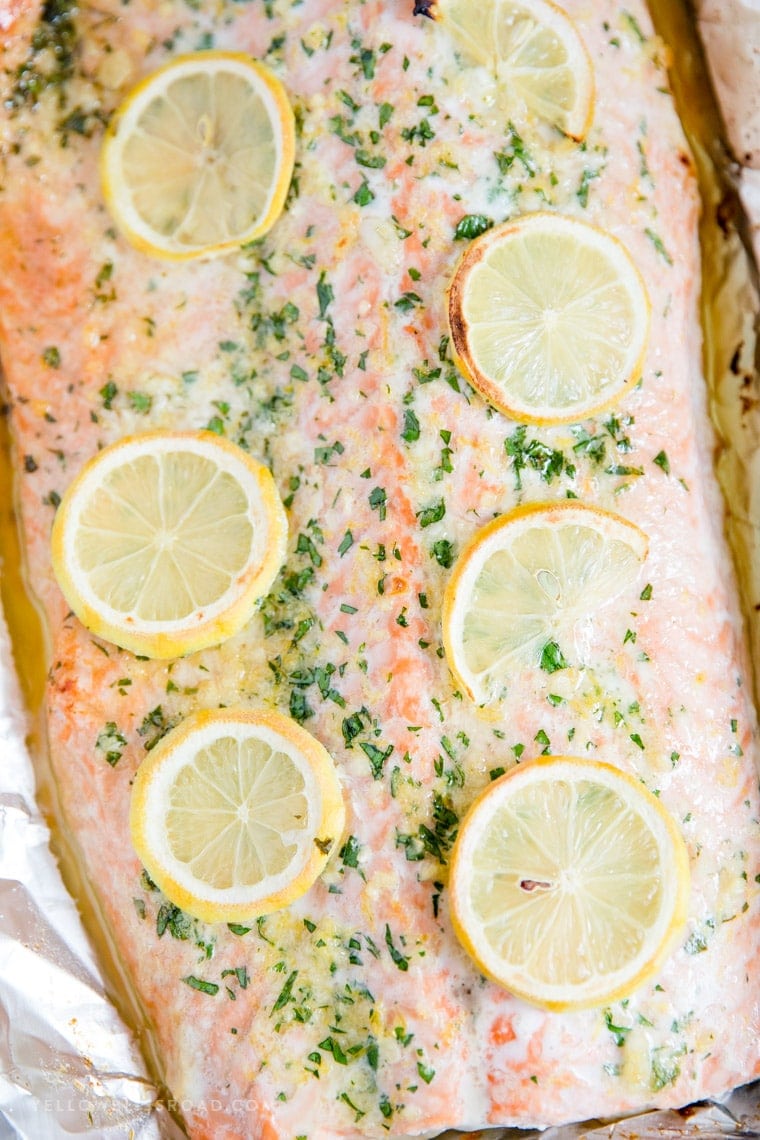
Helpful Tips
- Buy the freshest fish you can find. Fish should smell like the ocean. If it’s got a “fishy” smell, throw it back.
- Avoid any fish that any discoloration or is pale in color. Salmon should be bright and vibrant in color.
- Cooking with the skin on locks in extra moisture.
- Make sure to use a good quality, nonstick aluminum foil. Parchment paper works, to keep the fish from sticking, but the juices will spill everywhere and can tend to rip the paper.
More Delicious Salmon Recipes To Try
- Crunchy Ramen Noodle Salad with Salmon
- Grilled Salmon Kabobs
- Smoked Salmon Dip
- Air Fryer Salmon with Lemon Butter
- Grilled Salmon Salad
- Sheet Pan Salmon, Asparagus and Potatoes
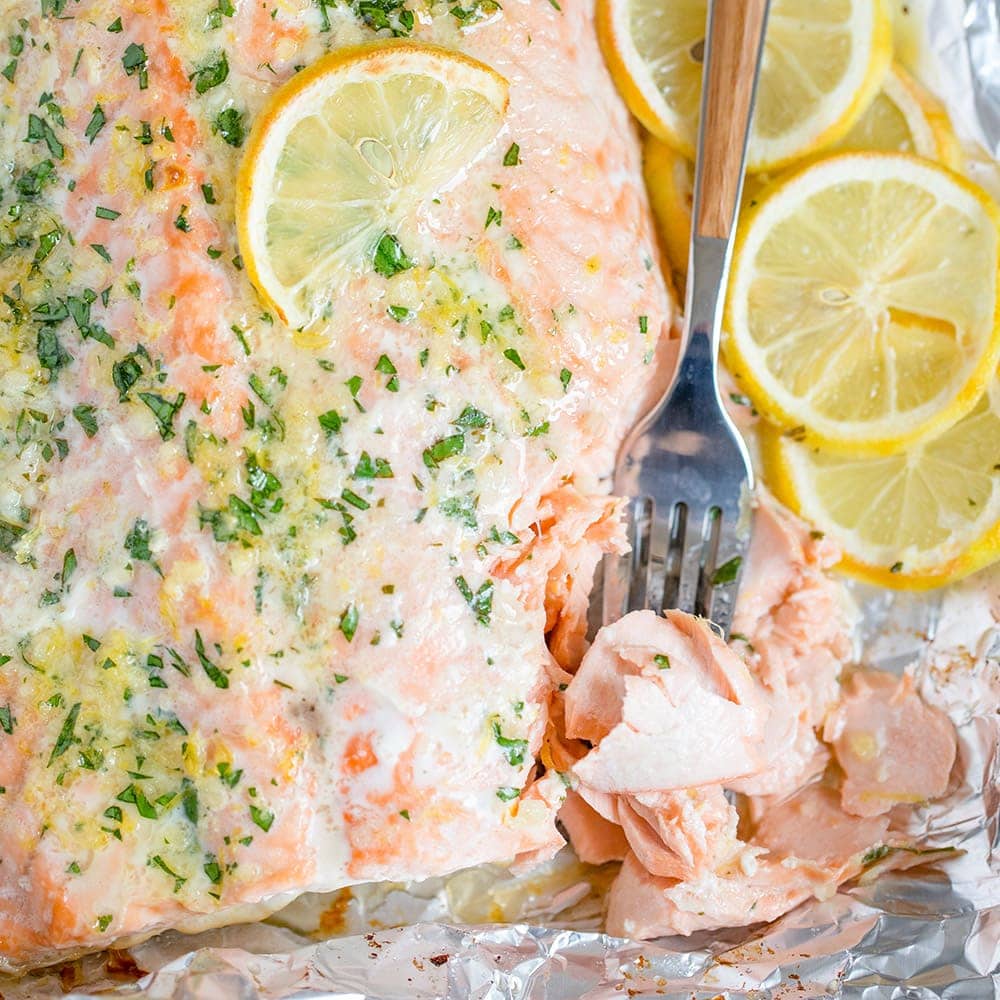
Oven Baked Salmon Recipe
Ingredients
- 1.5 pounds salmon fillet
- 1 lemon zested, then sliced
- 6 tablespoons butter softened
- 2 tablespoons honey
- 3 cloves garlic minced
- 2 teaspoons fresh minced parsley
- Kosher salt
Instructions
- Preheat oven to 400 degrees F. Line a large rimmed sheet pan with foil.
- Lay the salmon skin side down on the foil.
- Season lightly with salt and pepper.
- In a small bowl, combine softened butter, honey, garlic, lemon zest and minced parsley. Spread evenly over the top of the fish, then top with lemon slices.
- Bring up the sides of the foil around the salmon. This will help keep the juices from spilling all over the pan. Covering the salmon completely is ideal, but not a must.
- Bake in the preheated 400 degree oven for 15-18 minutes. (Cooking time will depend on size and thickness; it's done when the salmon is a light pink color and is tender and flaky; it should register 130-140 degrees F on a meat thermometer.)
- Remove from the oven and let rest for several minutes before serving. Serve with extra lemon wedges, if desired.
Notes
Nutrition
Nutritional Disclaimer Kristin Maxwell of “Yellow Bliss Road” is not a dietician or nutritionist, and any nutritional information shared is an estimate. For accurate calorie counts and other nutritional values, we recommend running the ingredients through your preferred online nutritional calculator. Calories and other nutritional values can vary depending on which brands were used.
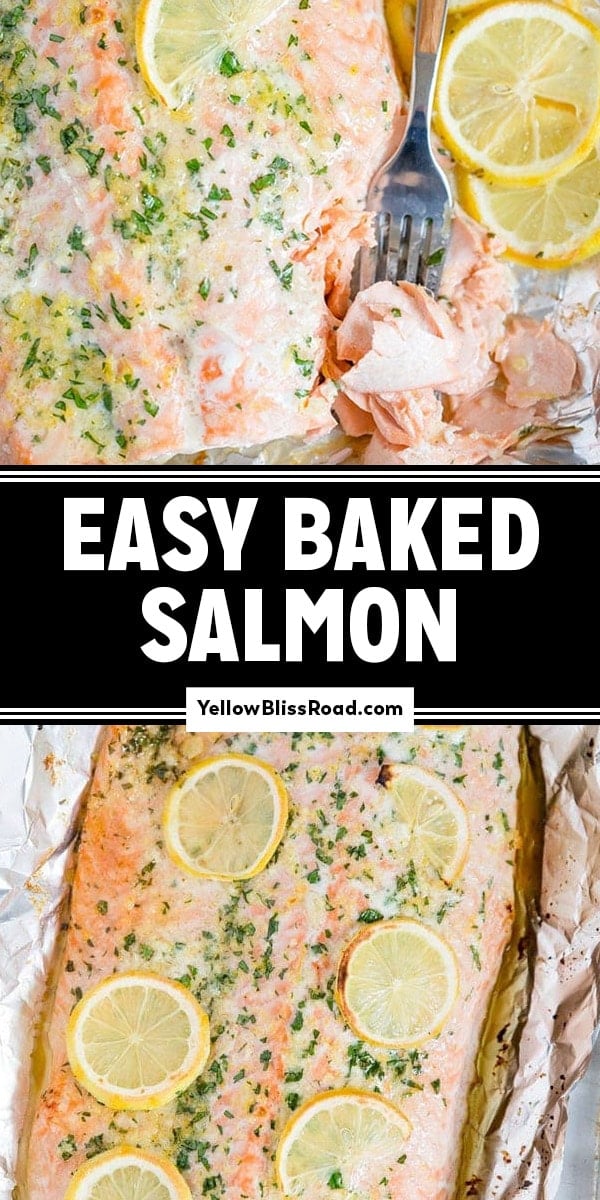
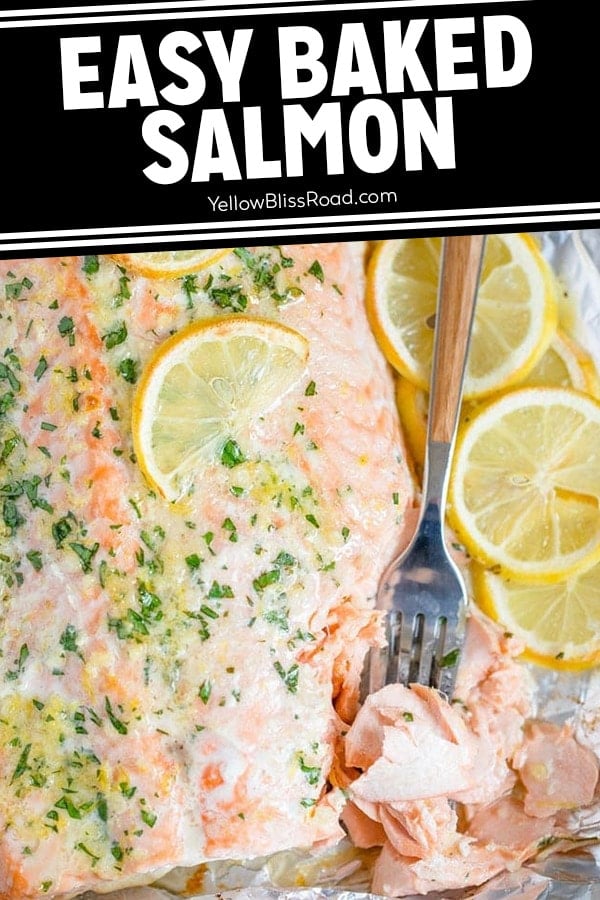
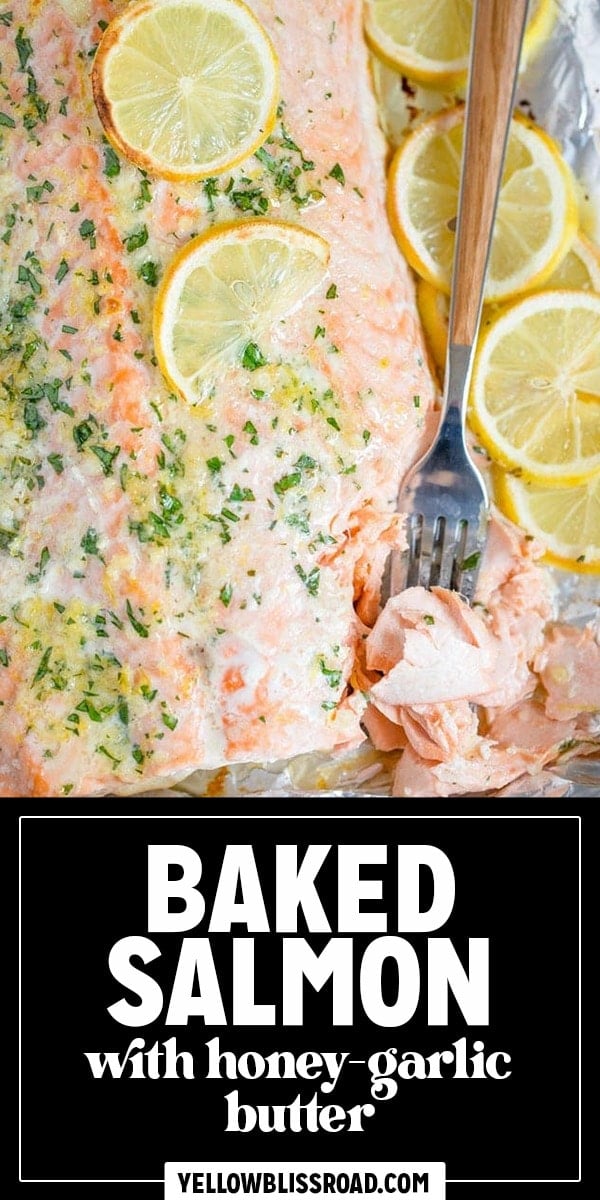
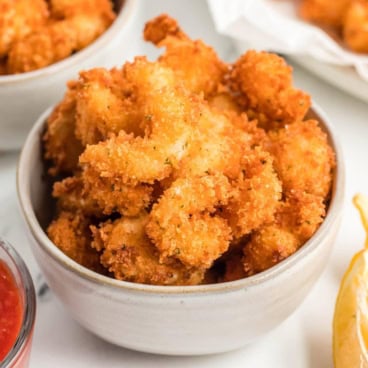
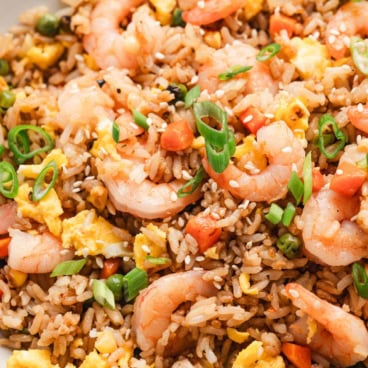
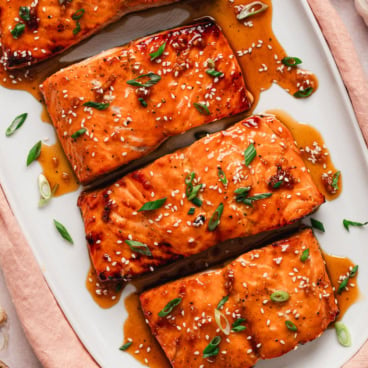
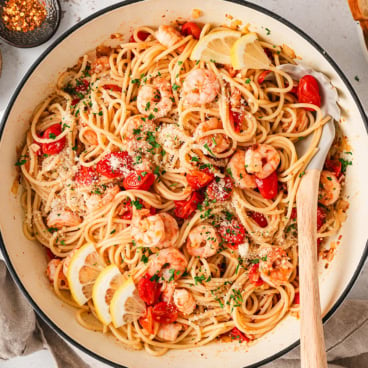
Easy and delicious. So many recipes overpower the salmon, but this was a mild but flavorful preparation. I’ll definitely be making this again.
Awesome feedback Susan! Thanks for stopping by.
Wow, it was a great and quick way to cook salmon, this is the way salmon should taste. Thanks.
Hi Kristin. I just made your easy baked salmon and you’re right, it’s the best salmon I’ve ever eaten. I also prefer the farm raised salmon. I think the wild is way too fishy tasting. Thanks for the great recipe!
Thank you April! I’m glad you enjoyed it!